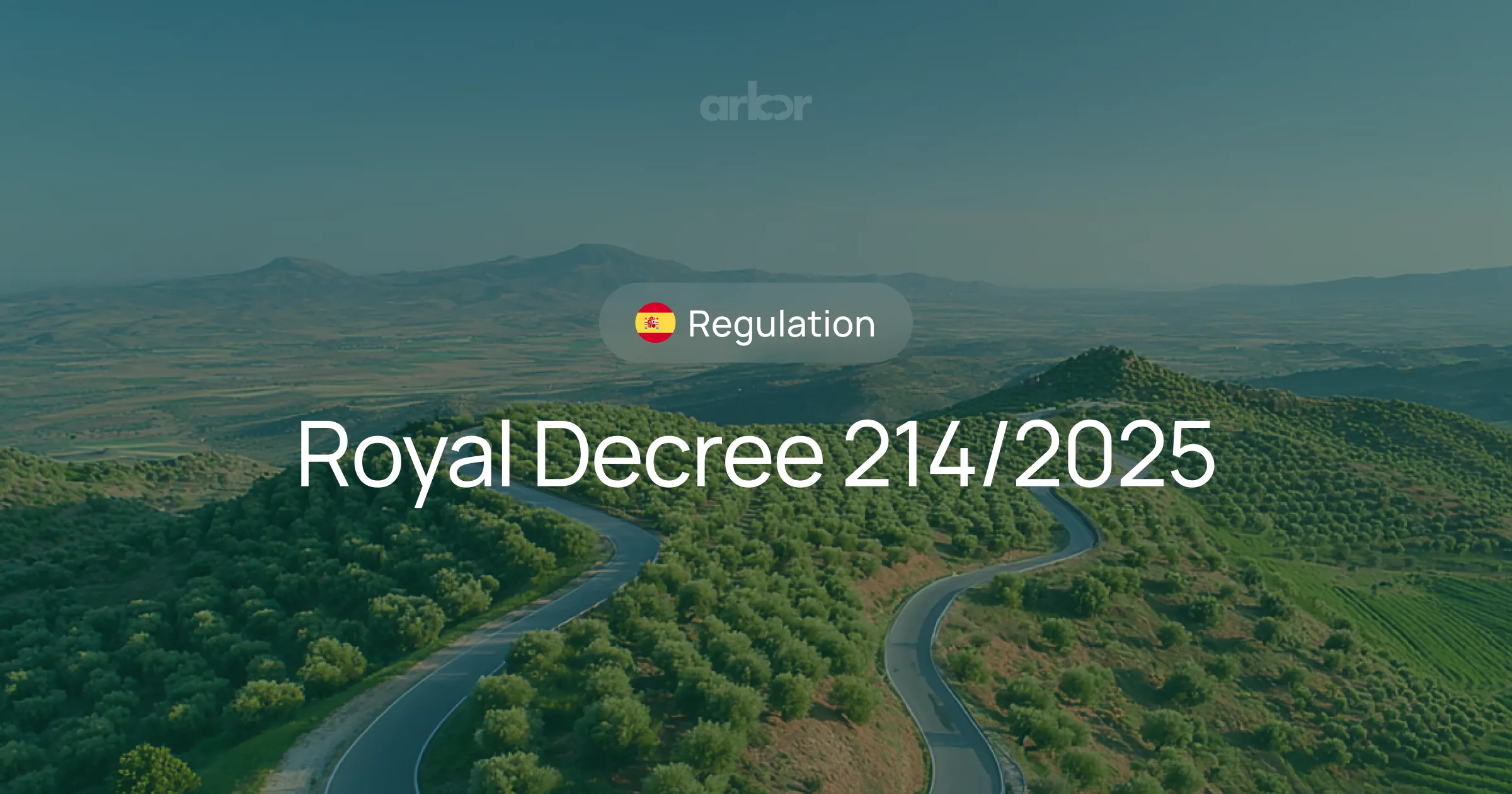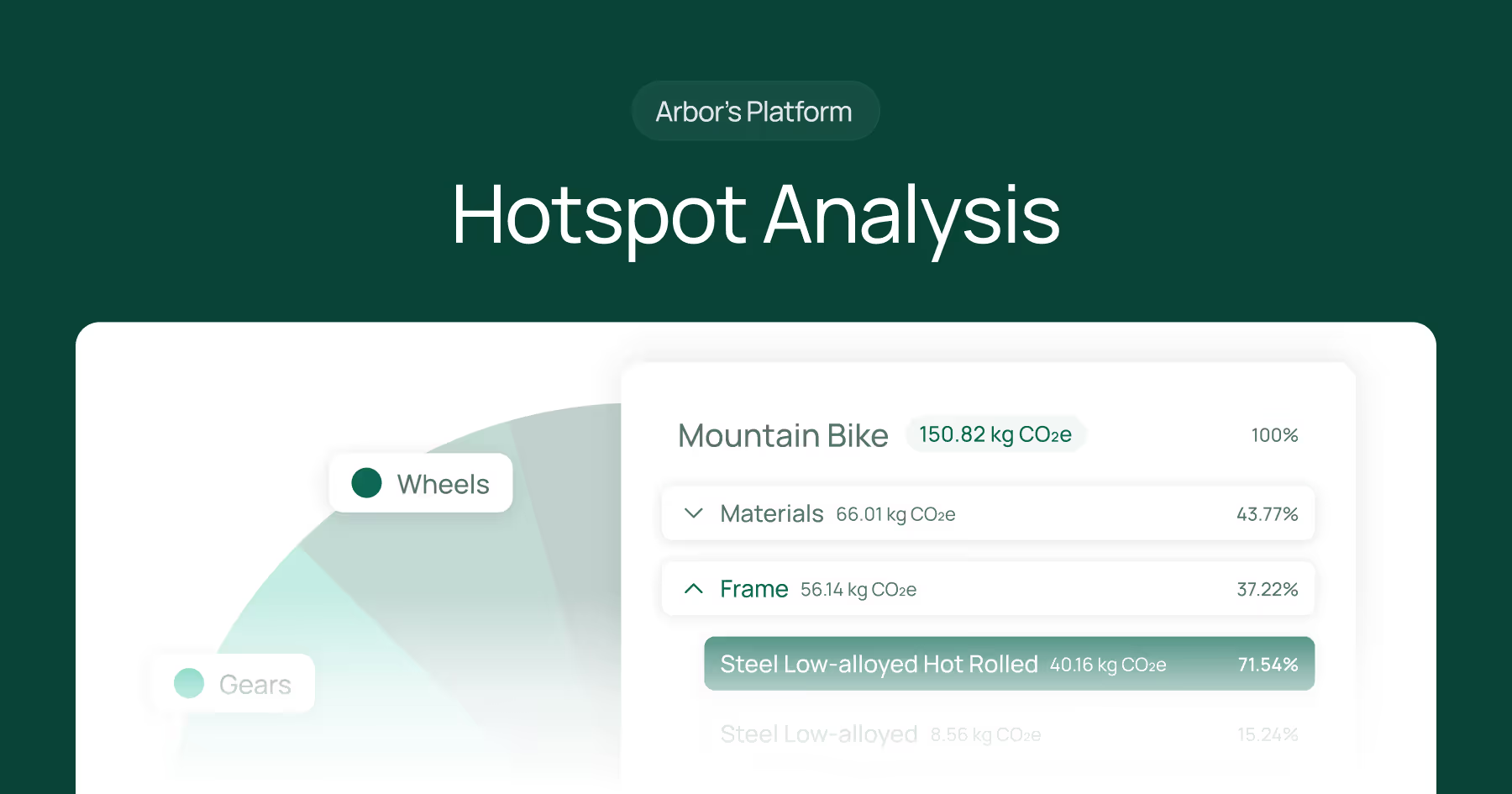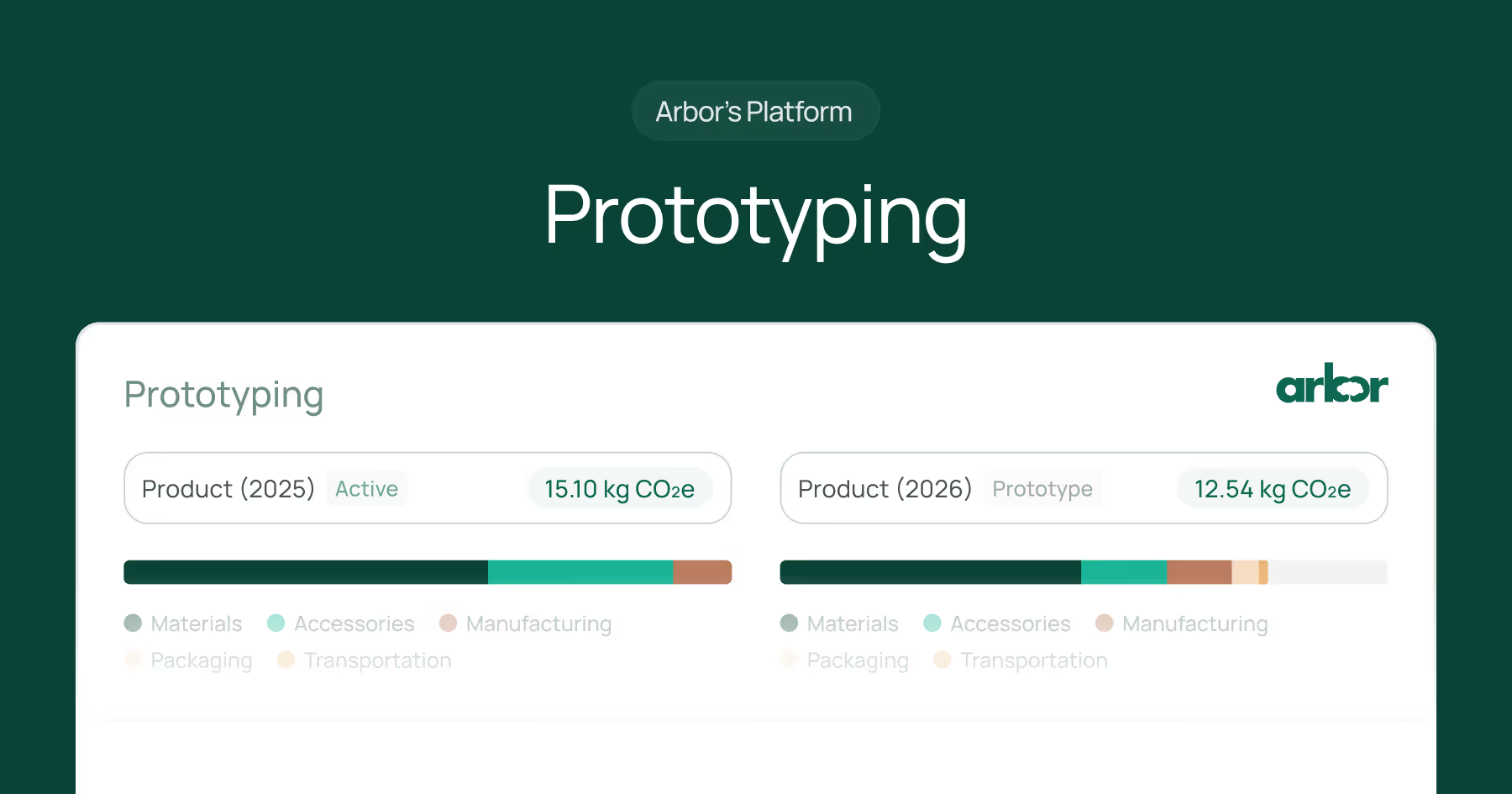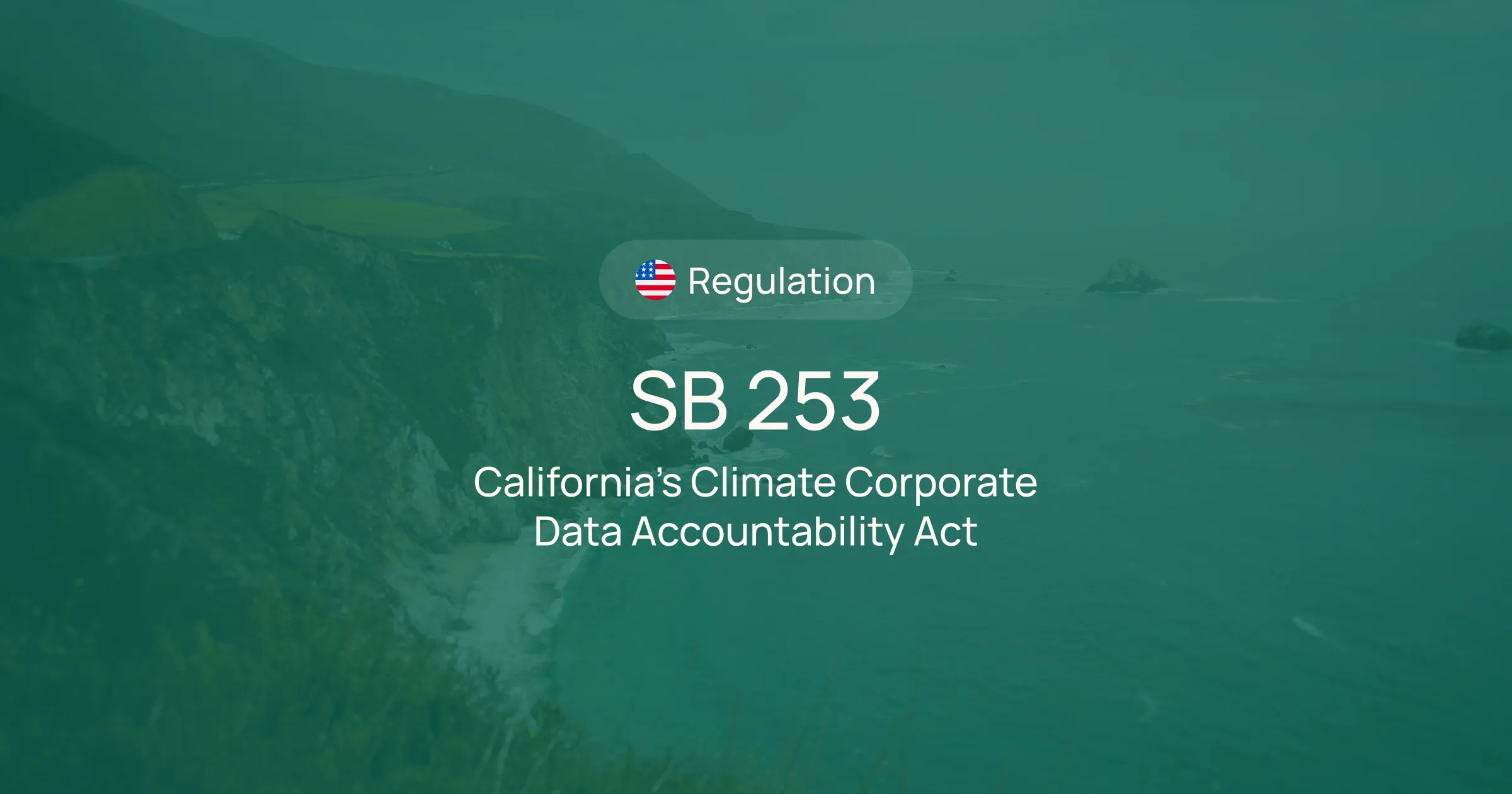Navigating the intricate landscape of environmental responsibility can be daunting for any organization. Yet, in our era of heightened corporate transparency and environmental consciousness, demonstrating a genuine commitment to sustainability is non-negotiable. That’s where ISO 14001 steps in, offering a structured framework to help you not only meet but exceed environmental management expectations.
You might wonder, "What exactly is ISO 14001, and how can it benefit my organization?" Whether you're leading a multinational corporation or a local non-profit, the principles and practices embedded in ISO 14001 can pave the way for more sustainable operations, enhanced reputation, and significant cost savings.
In this blog, we’ll discuss the essentials of ISO 14001, explore the steps to achieve verification, and explore why this standard is a game-changer for any organization.
What is ISO 14001?
ISO 14001:2015 (Environmental management systems — Requirements with guidance for use) is the internationally recognized standard for Environmental Management Systems (EMS). Created with the aim to help organizations apply a systematic approach to environmental issues, ISO 14001 provides a framework for businesses of all types and sizes—whether private, not-for-profit, or governmental—to design and implement an EMS. The standard follows the PDCA (Plan-Do-Check-Act) cycle to ensure continual improvement in environmental performance.
The PDCA Cycle Explained
%252520Cycle.avif)
- Plan: Establish environmental objectives and processes necessary to deliver results in accordance with the environmental policy.
- Do: Implement the processes as planned.
- Check: Monitor and measure processes against the environmental policy, including its commitments and operational criteria, and report the results.
- Act: Take actions to improve continually.
What is an EMS?
An Environmental Management System (EMS) is a part of a company's overall management system used to manage environmental aspects, fulfill compliance obligations, and address risks and opportunities. An EMS aims to:
- Protect the environment
- Mitigate potential adverse effects of environmental conditions
- Assist in the fulfillment of compliance obligations
- Enhance environmental performance
- Control or influence the way an organization's products and services are designed, manufactured, distributed, consumed, and disposed
- Achieve financial and operational benefits
- Communicate environmental information to interested parties
How do you get an ISO 14001 verification?
Achieving ISO 14001 verification involves a well-structured process that aligns with the Plan-Do-Check-Act (PDCA) cycle. This cycle ensures that environmental management practices are implemented and continually improved upon. Here’s a deeper dive into the steps involved:
Plan
4. Context of the Organization
The first step in the journey to ISO 14001 verification is understanding your organization's context. This means identifying external and internal issues pertinent to your organization’s mission and how these issues affect your ability to achieve the intended outcomes of your Environmental Management System (EMS).
- External Issues: These could include environmental laws, market conditions, and societal expectations. Climate change impacts and resource availability also fall under this category.
- Internal Issues: These involve the organizational culture, existing operational processes, and resource allocations. Employee engagement and internal policies affecting environmental performance are also critical aspects.
5. Leadership
Leadership is pivotal to the successful implementation of an EMS. ISO 14001 demands that top management actively participate in the EMS’s rollout and maintenance. Leaders must demonstrate commitment by:
- Developing and endorsing an environmental policy.
- Ensuring that environmental responsibilities are clearly defined and communicated throughout the organization.
- Allocating necessary resources for the EMS.
- Participating in periodic reviews ensures the EMS remains effective and aligned with the organization’s strategic direction.
6. Planning
Effective planning is the bedrock of a functional EMS. It involves identifying the environmental aspects of your organization’s activities, products, and services that can control or influence. The goal here is to plan for the ongoing functioning of the EMS by:
- Setting measurable environmental objectives and targets that align with your environmental policy.
- Conducting a risk and opportunity assessment to identify potential obstacles and enablers for achieving environmental goals.
- Creating action plans to address these risks and opportunities. This includes contingency plans for managing unforeseen environmental impacts.
7. Support
For the EMS to thrive, your organization must ensure adequate support in terms of resources. This encompasses:
- Infrastructure: Ensure that physical facilities, equipment, and technology are conducive to achieving the environmental objectives.
- Externally Provided Resources: Vet and manage suppliers and contractors to ensure their operations align with your environmental standards.
- Information Systems: Use robust data management systems to track environmental performance metrics.
- Competence: Ensure employees have the skills and training necessary to fulfill their environmental responsibilities.
- Finance and Human Resources: Allocate sufficient budget and personnel to support EMS activities.
Do
8. Operation
This phase ensures that your planned processes are executed as intended. The organization must implement control measures to manage significant environmental aspects effectively. This includes:
- Operational control procedures to manage the environmental impacts identified during the planning phase.
- Emergency preparedness and response plans to address potential environmental emergencies.
- Ensuring compliance with legal and other requirements related to environmental management.
- Engaging with suppliers and contractors to ensure they meet your environmental standards.
Check
9. Performance Evaluation
- Performance evaluation is crucial for determining whether your EMS is functioning as expected. Key activities in this phase include:some text
- Monitoring and Measurement: Regularly track and record your environmental performance indicators.
- Compliance Evaluation: Assess whether your organization meets regulatory and other compliance obligations.
- Internal Audits: Conduct periodic audits to verify that the EMS is effectively implemented and conforms to ISO 14001 requirements.
- Management Review: Leadership should periodically review the EMS to ensure it remains suitable, adequate, and effective.
Act
10. Improvement
Continuous improvement is at the heart of ISO 14001. Organizations must take corrective actions to address nonconformities and leverage opportunities to enhance the EMS. This includes:
- Assessing Process Nonconformities: Investigate and determine the root causes of any deviations from planned processes.
- Implementing Corrective Actions: Implement measures to prevent the recurrence of identified issues.
- Preventive Measures: Identify and implement strategies to prevent potential nonconformities.
- Process and Activity Changes: Modify processes and activities to minimize negative environmental impacts. This could involve adopting new, more environmentally friendly technologies or innovations.
- Recycling and Reuse: Increase using recycled and sustainable materials in your operations.
- Environmental Projects: Participate in or sponsor initiatives demonstrating your commitment to environmental stewardship, enhancing your organizational image.
Certification Process
The certification process typically consists of several steps:
- Gap Analysis: An initial assessment to identify gaps between your current practices and the ISO 14001 requirements.
- Implementation: Address the gaps identified during the gap analysis by implementing the EMS according to ISO 14001 standards.
- Internal Audits: Conduct internal audits to ensure your EMS functions correctly and meets ISO 14001 requirements.
- Management Review: Top management should review the EMS to ensure its ongoing suitability and effectiveness.
- Certification Audit: An external certification body will perform an audit to verify that your EMS meets ISO 14001 requirements.
Post-Certification
After achieving certification, it’s crucial to maintain and continually improve your EMS:
- Ongoing Monitoring: Keep a close watch on environmental performance metrics.
- Periodic Audits: Conduct regular internal and external audits to ensure ongoing compliance.
- Continuous Improvement: Regularly update and optimize your EMS processes to enhance environmental performance.
Why should you implement ISO 14001 in your organization?
Implementing ISO 14001 can yield numerous benefits for your organization:
Enhance Reputation and Trustworthiness
Demonstrating a commitment to managing environmental effects boosts your market presence and enhances relations with the community, thereby improving your reputation.
Boost Financial Efficiency
By saving energy and resources, an EMS helps reduce expenses and minimizes the risk of incidents that could lead to liability costs. Additionally, superior environmental measures can lead to lower insurance premiums.
Adopt Data-Driven Decision Making
Utilizing precise information for decision-making enhances the likelihood of success in your initiatives. It allows for monitoring and adjusting efforts before they deviate significantly, thereby saving both money and time.
Foster Continuous Improvement
ISO 14001 fosters an environment of ongoing enhancement, aiming for improved processes and lesser environmental damage. This can elevate your public standing and lead to cost savings.
About the International Standards Organization (ISO)
The International Standards Organization (ISO) is an independent, non-governmental international organization that develops and publishes standards to ensure quality, safety, efficiency, and interoperability across various industries. Established in 1947, ISO has fostered global trade and innovation through standardization. ISO 14001 is one of the many standards developed by ISO to address environmental sustainability and help companies reduce their GHG emissions.
Summary
ISO 14001 is not just a certification; it's a transformative approach to environmental management that can significantly benefit your organization. Adopting this globally recognized standard can enhance your credibility, improve environmental performance, and gain a competitive edge. ISO 14001 helps organizations of all types and sizes navigate the complexities of sustainability, from resource usage and waste management to regulatory compliance and stakeholder engagement.
Implementing ISO 14001 fosters continuous improvement, data-driven decision-making, and financial efficiency, ultimately leading to a more sustainable and thriving organization. If you're ready to take the next step towards environmental stewardship, Arbor supports your journey with comprehensive carbon accounting solutions. Request a demo today to learn more about our carbon accounting solutions and how we can support your journey to a greener future.
Measure your carbon emissions with Arbor
Simple, easy carbon accounting.

FAQ about ISO 14001:
What is the ISO 14001 standard?
ISO 14001 is an internationally recognized environmental management system (EMS) standard. It provides a framework for organizations to develop, implement, and continuously improve their environmental performance.
What is the difference between ISO 9001 and 14001?
ISO 9001 focuses on quality management, emphasizing areas like customer satisfaction and resource management. In contrast, ISO 14001 targets environmental management, concentrating on reducing environmental impacts and improving sustainability.
What are the five elements of ISO 14001?
The five main requirements of ISO 14001 include Environmental Policy, Planning, Implementation, Checking and Corrective Action, and Management Review. These elements ensure a comprehensive approach to managing environmental responsibilities.
What is the ISO 14001 policy?
The ISO 14001 policy entails a commitment to continual improvement, pollution prevention, and compliance with relevant environmental regulations. It serves as the foundation for setting environmental objectives and targets.
What are the basic requirements of ISO 14001?
Basic requirements include developing and implementing an EMS, conducting environmental impact assessments, setting environmental objectives, and continually improving the system based on regular reviews and evaluations.
Is ISO 14001 still valid?
Yes, ISO 14001:2015 is the current version of the standard. It remains valid following a review in 2021, during which no changes were made.
Did ISO 14001 replace ISO 9001?
No, ISO 14001 did not replace ISO 9001. ISO 9001 is a standard for quality management systems, while ISO 14001 focuses on environmental management. They are complementary but serve different purposes (BSI).
What does ISO stand for?
ISO stands for the International Organization for Standardization, a global federation of national standards bodies from over 160 countries.
Do all companies have to follow ISO 14001?
No, ISO 14001 compliance is not mandatory. However, obtaining certification can offer numerous benefits, such as enhanced environmental performance, improved regulatory compliance, and increased market opportunities.
What are the 3 R's for ISO 14001?
The 3 R's for ISO 14001 refer to Reduce, Reuse, and Recycle. These principles guide organizations in managing waste in an environmentally friendly manner (BSI).
What is the key principle of ISO 14001?
The key principle of ISO 14001 is continuous improvement. This involves regular assessments and enhancements to environmental management practices using the Plan-Do-Check-Act (PDCA) cycle.
What are the main focus areas of ISO 14001?
ISO 14001 focuses on improving environmental performance by managing resources efficiently, reducing waste, and ensuring legal compliance. It addresses both direct and indirect environmental impacts.
What is ISO 14001 and why is ISO 14000 important?
ISO 14001 is part of the ISO 14000 family of standards, which provides guidelines for environmental management. These standards help organizations minimize their environmental footprint and promote sustainable practices.
What is the difference between ISO 14001 and ISO 45001?
ISO 14001 addresses environmental management, while ISO 45001 focuses on occupational health and safety. Both standards aim to improve organizational practices but in different areas of management.
Do all companies have to follow ISO 14001?
No, while not mandatory, many companies choose to follow ISO 14001 to demonstrate their commitment to sustainability and improve their environmental performance.




.webp)











%20Arbor.avif)





%20Arbor.avif)


.avif)






%20Arbor%20Canada.avif)

.avif)
%20Arbor.avif)
.avif)






_.avif)
.avif)
%20Arbor.avif)




%20Software%20and%20Tools.avif)





.avif)
.avif)




%20EU%20Regulation.avif)











.avif)


%20Arbor.avif)









_%20_%20Carbon%20101.avif)







.avif)

.avif)
.avif)



.avif)








